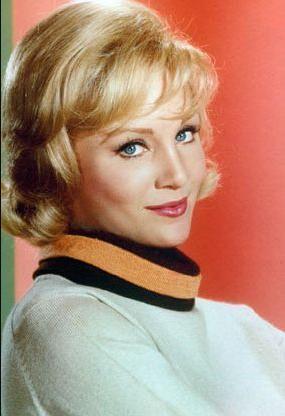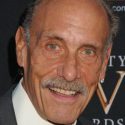Susan Oliver Death
Susan passed away on May 10, 1990 at the age of 58 in Woodland Hills, Los Angeles, California,. Susan's cause of death was lung cancer.
When did Susan Oliver die?
May 10, 1990How did Susan Oliver die? What was the cause of death?
Lung cancerHow old was Susan Oliver when died?
58Where did Susan Oliver die? What was the location of death?
Woodland Hills, Los Angeles, California,
Susan Oliver Birthday and Date of Death
Susan Oliver was born on February 13, 1932 and died on May 10, 1990. Susan was 58 years old at the time of death.
Birthday: February 13, 1932
Date of Death: May 10, 1990
Age at Death: 58
Is Susan Oliver's father, George Gercke, dead or alive?
George Gercke's information is not available now.
Is Susan Oliver's mother, Ruth Hale Oliver, dead or alive?
Ruth Hale Oliver's information is not available now.
Susan Oliver - Biography
A fascinating aura of mystery seemed to surround the characters portrayed by blue-eyed blonde actress Susan Oliver, whose trademark high cheekbones, rosebud lips and heart-shaped face kept audiences intrigued for nearly three decades. While her career didn't play out as well as it should have, she nevertheless left a fine legacy of work on stage, film and TV.Born Charlotte Gercke on February 13, 1932 (some sources incorrectly list years as early as 1929 or late as 1937), in New York City, she was the daughter of well-to-do George Gercke, a political reporter and journalist for the New York World, and his astrology practitioner wife, Ruth Oliver (aka Ruth Hale Oliver), both of whom divorced while Susan was still quite young (age 3). As a privileged adolescent, she went to various public and boarding schools. As a teenager, she lived with her father and traveled with him overseas to Japan, where he maintained a news post. While there (1948-1949) she studied at the Tokyo International College and developed an interest in Japan's deep obsession with the American pop culture. Much later in her career (1977), in fact, Susan would write and direct Cowboysan (1978), a short film which told of Japanese actors performing in an American western.In the spring of 1949, Susan briefly rejoined her mother, who was now remarried, living in Los Angeles, and gaining a solid reputation as Hollywood's astrologer to the stars. By that fall, however, Susan was back East, studying drama at Pennsylvania's Swarthmore College (for four years). She then continued her training at New York City's Neighborhood Playhouse, while finding stage work in both summer stock and regional theaters. Commercials and daytime/prime-time TV work started coming Susan's way and, by that time, she had already changed her stage moniker to the more flowing name of Susan Oliver.The year 1957 began with a debut ingénue role as a Revolutionary War-era daughter in the Broadway comedy, "Small War on Murray Hill", which opened and closed at the Ethel Barrymore Theater after only nine days. A far more potent and substantial role fell her way in October of that same year, when she replaced British actress Mary Ure as "Allison Porter" in the superior "kitchen sink" drama, "Look Back in Anger". Susan continued to find extensive dramatic work in live East coast TV plays, with roles on The Kaiser Aluminum Hour (1956), The United States Steel Hour (1953), Studio 57 (1954) and Matinee Theatre (1955). At this juncture, she decided to migrate back to Los Angeles for more on-camera opportunities and attained guest roles on such popular prime-time series as Wagon Train (1957), Father Knows Best (1954), The Millionaire (1955) and The Lineup (1954).Susan made her cinematic debu as the tough, ill-fated title role in Warner Bros.' low-budget melodrama, The Green-Eyed Blonde (1957). The film was shot in black and white, so it didn't matter that Susan's eyes were blue. Topbilled, she played the rebellious delinquent leader at a girls' reformatory and lent class to the rather exploitative material, which was written by blacklisted writer Dalton Trumbo. Two years later, Susan returned to the big screen as another tough cookie in the better-received biopic, The Gene Krupa Story (1959), as a jazz singer who lures the renowned drummer (played by Sal Mineo) down the road to drugs and near ruin. A brief return to the Broadway stage, with the comedy "Patate" starring Tom Ewell and Lee Bowman, would last only four days but Susan earned great notices and won New York's Theatre World Award World for her "outstanding breakout performance".On early 1960s TV, Susan continued to offer a number of striking and often showy, neurotic performances on episodes of Bonanza (1959), Wanted: Dead or Alive (1958), 77 Sunset Strip (1958), Wagon Train (1957), The v*rginian (1962), Adventures in Paradise (1959), Route 66 (1960), Dr. Kildare (1961) and The Fugitive (1963). Filmwise, she found a few lead and support roles in the Elizabeth Taylor-starred BUtterfield 8 (1960); as a psychiatric nurse in the all-star hospital melodrama, The Caretakers (1963); in the tailored-for-the-teens romp, Looking for Love (1964), as a pal to Connie Francis; and in the hilarious Jerry Lewis slapstick vehicle, The Disorderly Orderly (1964), in which she added rather heavy drama as a depressed hospital patient. Her most challenging role, during this time, was as the ambitious wife of doomed country music legend Hank Williams (George Hamilton, in offbeat casting) in Your Cheatin' Heart (1964).Susan's name remained active particularly on TV, where she graced such programs as The Andy Griffith Show (1960), The Travels of Jaimie McPheeters (1963), Burke's Law (1963), Dr. Kildare (1961), Ben Casey (1961), Gomer Pyle: USMC (1964), My Three Sons (1960), The Invaders (1967) and Mannix (1967). Classic TV showcases includes the 1960 The Twilight Zone (1959) episode, The Twilight Zone: People Are Alike All Over (1960), in which she plays beautiful martian, "Teenya", who encounters astronaut Roddy McDowall, and the unsold 1964 Star Trek (1966) pilot, Star Trek: The Cage (1986), as "Vina", the sole survivor of a crashed spaceship who charms "Commander Christopher Pike" (Jeffrey Hunter, the captain subsequently replaced by William Shatner's "Captain Kirk", when the show became a series). Footage from that pilot was later incorporated into the two-part episode, "The Menagerie". In 1966, Susan made bittersweet news, when her regular role as "Ann Howard" in the prime-time hit soaper, Peyton Place (1964), was pushed off a cliff to her death. Written out after only five months of a year-long planned role, audiences (as well as Susan) were saddened by the loss of a character they had grown to care about. Susan, subsequently, starred in her own pilot for a new series, "Apartment in Rome", but it didn't sell.Unfortunately, Susan's late 1960s work in a variety of film genres and opposite a number of formidable leading men were ultimately too few and did not help to advance her career. These included the LSD-induced drama, The Love-Ins (1967), with Richard Todd and James MacArthur; the western, A Man Called Gannon (1968), starring Anthony Franciosa; and the sci-fiers, Change of Mind (1969) with Raymond St. Jacques and The Monitors (1969) with Guy Stockwell. The 1970s, too, hardly fared better with standard roles in Ginger in the Morning (1974) (donning a black wig), the Spanish-made drama Nido de viudas (1977), and Hardly Working (1980), in which she reunited with Jerry Lewis in what was supposed to be his come-back attempt. That film was ultimately shelved, before earning scant release a couple of years later.Susan appeared as a regular for one season (1975-76) on Days of Our Lives (1965) and received a "Supporting Actress" Emmy nomination for the made-for-TV movie, Amelia Earhart (1976), playing aviatrix Neta "Snookie" Snook, friend and mentor to the title character, played by Emmy-nominated Susan Clark. The role of "Snook" was tailor-made for Susan, who, by this time, had merited attention as a licensed commercial pilot and skilled flying ace.Susan's passion for flying had been compromised a decade earlier after a dramatic 1966 commercial plane scare. The near-death experience kept the actress on solid ground for well over a year, before she managed to overcome her paralyzing fear. In 1970, fully recovered, she co-piloted a single-engine Piper Comanche to victory in the Powder Puff Derby racing event, a victory that earned her the name, "Pilot of the Year". [Amelia Mary Earhart was the first female pilot to fly solo across the Atlantic Ocean]. In her attempt to fly to Moscow, however, the Soviet government denied her entrance to their air space and she was forced to end her journey in Denmark. Susan would later write about her flying exploits in her autobiography, "Odyssey: A Daring Transatlantic Journey" (1983).Susan's last years were focused on the small screen, with roles in the TV-movies, Tomorrow's Child (1982) and International Airport (1985), and standard guesting on The Love Boat (1977), Murder, She Wrote (1984), Simon & Simon (1981) and Freddy's Nightmares (1988). She also moved behind the camera a few times, directing episodes of M*A*S*H (1972) and Trapper John, M.D. (1979). A long-time smoker, the never-married Susan was diagnosed with lung cancer and died at the Motion Picture and Television Hospital in Woodland Hills, California at age 58 -- an untimely end for such a beautiful lady and strong talent.- IMDb Mini Biography By: Gary Brumburgh / gr-home@pacbell.netSusan Oliver was born on February 13, 1932 in New York City. Her parents divorced when she was just three years old. One of the highlights of an economically challenged childhood during the Great Depression was the time she was spent in and around Pennsylvania's Hedgerow Theatre, known today as "America's First Repertory Theatre." Co-founded by Ms. Oliver's maternal grandmother, Margaret Scott Oliver, Susan first performed onstage at the Hedgerow as both a child and a teenager.Completing her entire senior year of high school in just one month at the age of fifteen, she moved to Tokyo, Japan in 1947 to live with her father and his new wife. Becoming the U.S. Army's youngest clerk/typist in the South Pacific, she also attended a Catholic women's college and briefly considered becoming a nun. Instead, she returned to the U.S. in 1949 as a freshman at Swarthmore College. Too shy to try out for the school's stage plays, she instead joined the choral group and became convinced that her future lied in the performing arts.Financial constraints forced her to leave Swarthmore after just one year and she wound up in New York City, where she successfully auditioned for admission to the prestigious Neighborhood Playhouse. She studied under the renowned Sanford Meisner and Martha Graham, working with a peer group that included Joanne Woodward, Steve McQueen, and Syd Pollock.After a few years of regional and summer stock theatre, Susan landed a series of increasingly notable stage roles on and off Broadway, most notably portraying Little Miss in a 1955 production of La Ronde (directed by José Quintero) and performing in the 1957 production of Small War on Murray Hill (directed by Garson Kanin). During this time, she also appeared in numerous local New York City television productions, including well-known live dramatic anthologies of the era such as Goodyear Television Playhouse, Studio One, Camera Three, The Kaiser Aluminum Hour and The United States Steel Hour.In 1957, she did her first television work in Los Angeles and quickly landed the lead role in the Warner Brothers feature film The Green-Eyed Blonde (penned by black-listed Dalton Trumbo under the pseudonym Sally Stubblefield). This led to a somewhat unprecedented 7-year/2-picture-a-year non-exclusive contract with Warner Brothers. Unfortunately, the studio (perhaps feeling the pinch of television's Golden Age on box office attendance) failed to put Ms. Oliver in any additional films for over six months. Growing bored and disliking the constant studio-driven promotion and PR machine, she returned to New York and landed the lead female role in John Osborne's Look Back in Anger (directed by Tony Richardson), replacing Mary Ure.Warner Brothers chose exactly this moment to call her back to Hollywood as James Garner's co-star in Up Periscope. Unimpressed by the script, Susan chose to break her Warners contract and stay in the play. Many have since speculated that this move, coupled with Jack Warner's notorious vindictiveness, essentially guaranteed that Susan Oliver would be blacklisted from significant film work at all the major studios from then onwards. However, it did not prevent her from landing another Broadway lead in 1958's Patate and ultimately receiving the 1958-9 Theatre World Award for Most Promising Newcomer (along with Larry Hagman).In 1959, Susan committed to residing fulltime in Los Angeles, and despite being largely shut out of feature film roles since she now lacked a studio contract, her undeniable talent and versatility led her to quickly become one of the most prolific television actresses of her era (at one point guest starring on three different CBS shows in just one week). Arguably the most significant female guest star of her era, she appeared in four Wagon Trains, four v*rginians, three Playhouse 90s, three Route 66s, three Dr. Kildares and a notable two-part episode of The Fugitive. By 1964, her high status on television made her Gene Roddenberry's obvious choice for the female lead in his original Star Trek pilot (rejected by NBC but later re-used for the long flashback sequences in the 1966 series' only two-part episode, The Menagerie).Preferring to retain her independence and avoid being tied down, Ms. Oliver declined the lead roles in at least three television series. However, she did commit to four months on the highly-popular Peyton Place in 1966, where she figured prominently in the 3-times-per-week primetime serial and provided a huge ratings boost before ultimately disappointing viewers with her sudden departure from the show in August of that year.But Susan already had her sights set on loftier goals. Overcoming an almost crippling fear of flying (caused in 1959 when the Boeing 707 she was aboard plunged 30,000 feet towards the Atlantic before leveling out just in time), Ms. Oliver quickly became obsessed with flying single-engine planes in 1964. Earning far more than the standard amateur flight certifications, she eventually set out to become the first woman to fly a single-engine plane from New York to Moscow in 1967. The dangerous journey became even more so due to numerous delays with the plane and with Soviet officials, leading her to embark in early-winter conditions. Despite successfully making the most dangerous legs of the journey (from Canada, through Greenland and Iceland, and on to Scotland), she was stopped in Copenhagen when the Soviets decided not to allow her to fly the final leg to Moscow. The U.S. press dubbed her journey "The Flight That Failed," trivializing what should have been recognized as a major achievement (during which Ms. Oliver set five world records). Her love of flying continued despite this lack of acknowledgement, and in 1968 Bill Lear invited her to become the first woman ever flight trained for his new Lear Jet (an offer she gladly accepted).In the mid-1970's, Susan Oliver surprised everyone by suddenly giving up flying and virtually turning her back on acting (where she was still a highly sought-after prime time guest star and even had a popular 8-month run on Days of Our Lives). Instead, she focused on her long-held desire to write and direct. A member of the original 1974 AFI Directing Workshop for Women (in a class that included Lily Tomlin, Margot Kidder, Kathleen Nolan and Maya Angelou), she eventually expanded one of her student films into the ambitious 35mm independent short Cowboysan (1978). But despite her constant efforts, it would not be until 1982 that she got her first chance to work as a DGA director, on the final season's first episode of M*A*S*H (one of only five women ever to direct in that show's 11-season run).Off of that initial success, Susan landed the chance to direct a 1983 fifth-season episode of Trapper John, M.D. The first woman to direct that show (and one of only two in its seven seasons), she unexpectedly encountered a hostile environment described by more than one person present on the set as "not being ready for a woman director." Unfortunately, this was to be Susan's last directing opportunity. Acting only as often as necessary to pay the bills, she spent the rest of the decade trying to direct again (both on TV, and on a feature film she co-wrote and hoped to star in as well).Diagnosed with cancer in late 1989, Susan Oliver died with quiet dignity at The Motion Picture and Television Home in Woodland Hills, California on May 10, 1990. She was only 58 years old.- IMDb Mini Biography By: betterthanrealityTrade Mark (3) Platinum blonde hairSparkling blue eyesHigh cheekbonesTrivia (14) She was a licensed pilot.She won the Powder Puff Derby in 1970.She was named Pilot of the Year in 1970.Attempted to become the first woman to fly a single-engine plane solo from New York to Moscow, but was deterred in Denmark when the Soviet government denied her permission to enter their air space.Her mother was noted Hollywood astrologer Ruth Oliver. She died in 1988, two years before Susan. Her father, George Gercke, was a newspaperman.Gorgeous blonde of 1960s movies with equally gorgeous cheekbones who tended to play neurotic, troubled types. She attracted major television attention on Peyton Place (1964) when her character, Ann Howard, was killed off, and also has a minor cult following as Vina from the original series pilot Star Trek: The Cage (1986).Trained at the Neighborhood Playhouse.Her memoir "Odyssey" detailed her journeys as a pilot. She once survived the crash of her own Piper Cub plane in 1966.In celebration of Star Trek (1966)'s 30th anniversary, an action figure was released of Susan as her character, Vina, on Star Trek: The Cage (1986).Was a Buddhist and an expert on baseball.She was one of the original 19 women admitted to the American Film Institute's Directing Workshop for Women (AFI DWW).A week after her popular character Ann Howard on Peyton Place (1964) was killed off on the series in 1966, Susan survived the crash of a Piper Cub near Santa Paula, California that a friend was piloting.Oliver experienced an event in February 1959 that belied her later aviation accomplishments. She was a passenger aboard the Clipper Washington, a Boeing 707 on a transatlantic flight from Paris to New York City when it dropped from 35,000 feet to 6000 feet. It happened on February 3, 1959, the same day Buddy Holly died in an airplane crash. These events caused her a paralyzing fear of flying and it took extensive hypnosis to overcome it. In July 1964, she was reintroduced to personal flying when he took her on an evening flight over Los Angeles in a Cessna 172. The experience motivated her to return the next day to the Santa Monica Airport to begin training for a Private Pilot certificate next year.Lived with Jim Hutton throughout 1963; and they parted, when she began focusing on her career as a pilot.Personal Quotes (2) [in 1988 interview] Any actor who is a professional picks up so much information from years of experience that they bring extra insights into directing. Not every actor will be a good director, you must have a good visual sense, a good story sense. I feel very deeply that I want to tell stories of value on film.I want to be the best actress I can. But most of all, I want to be myself.








